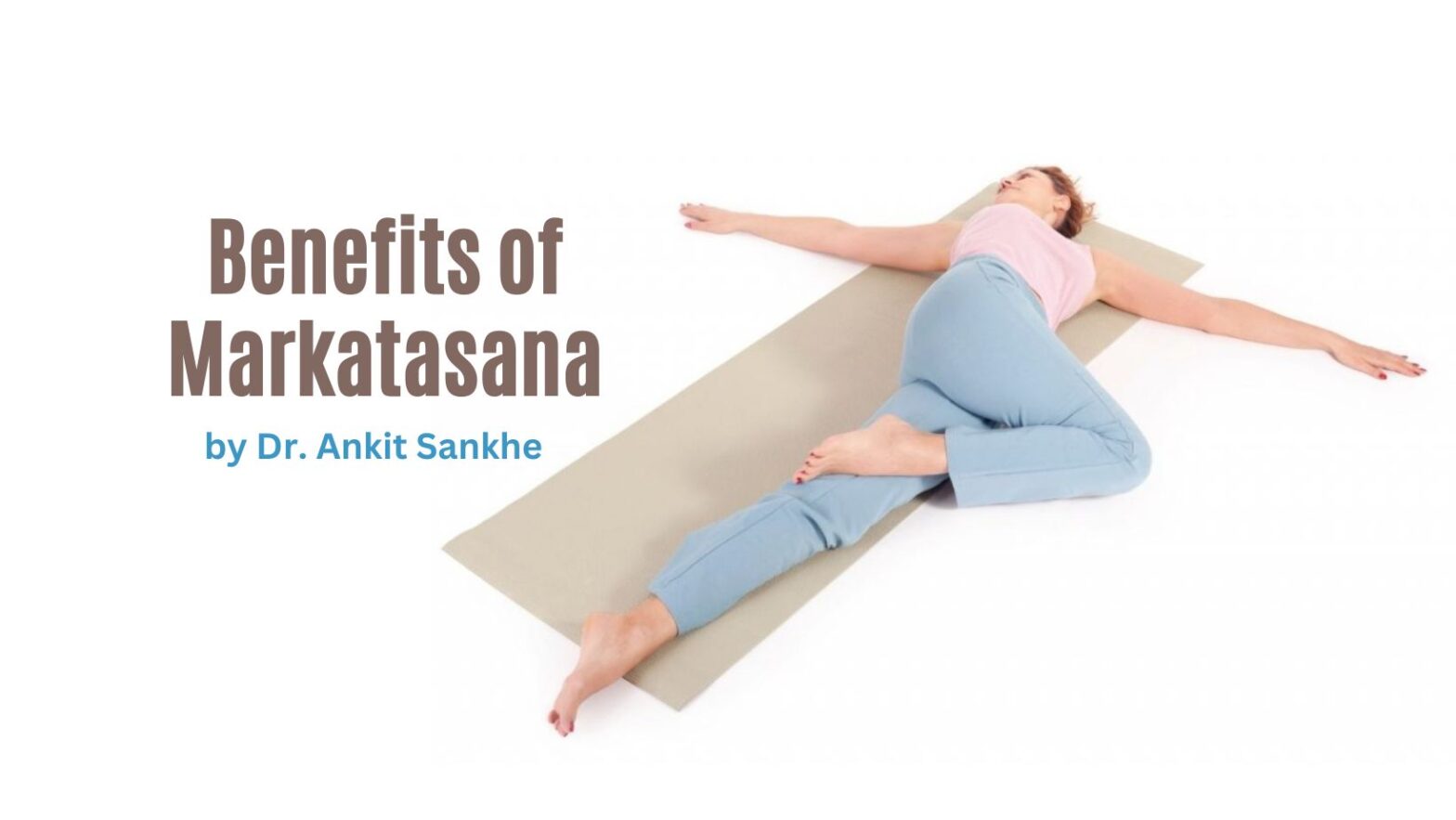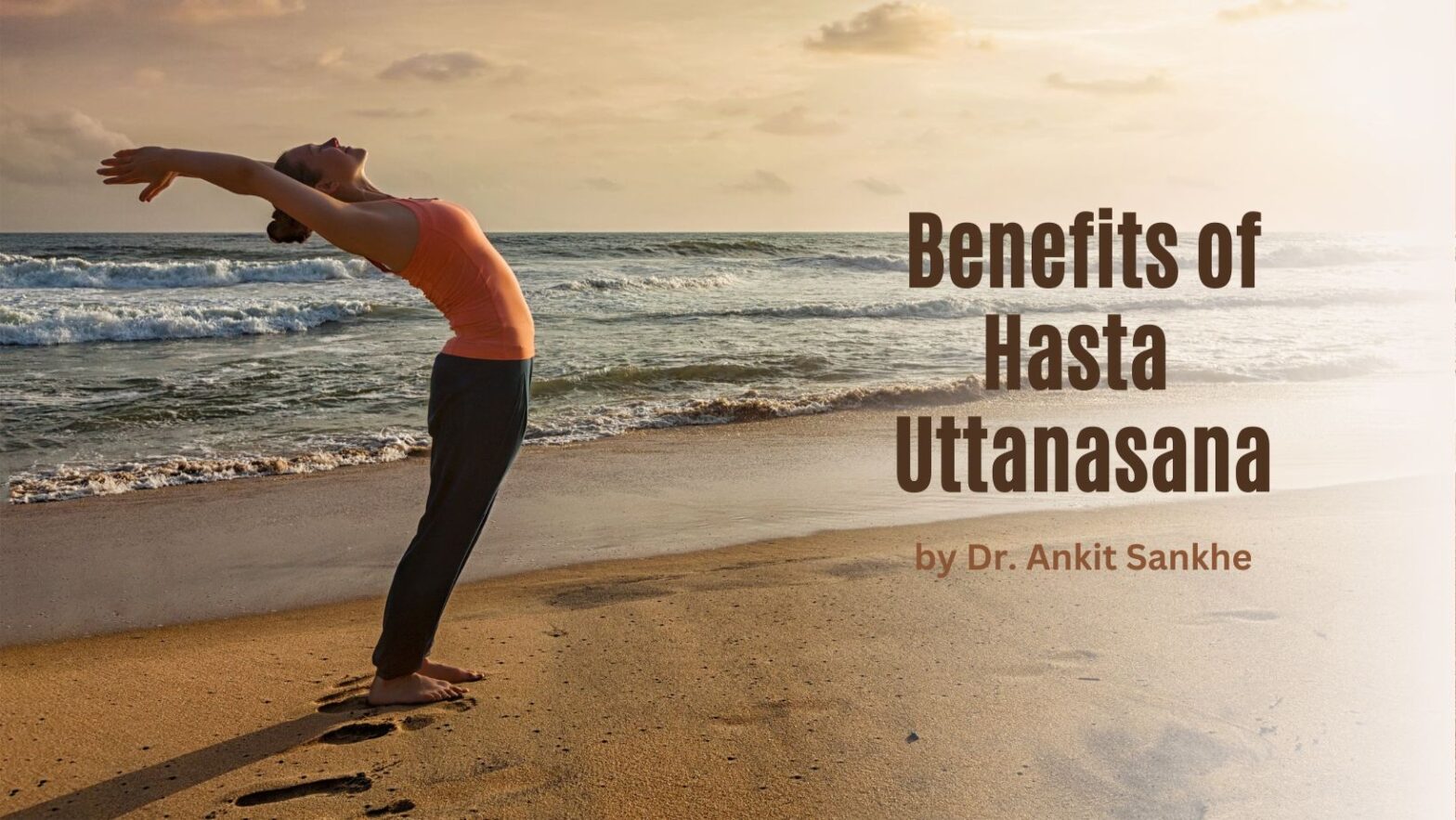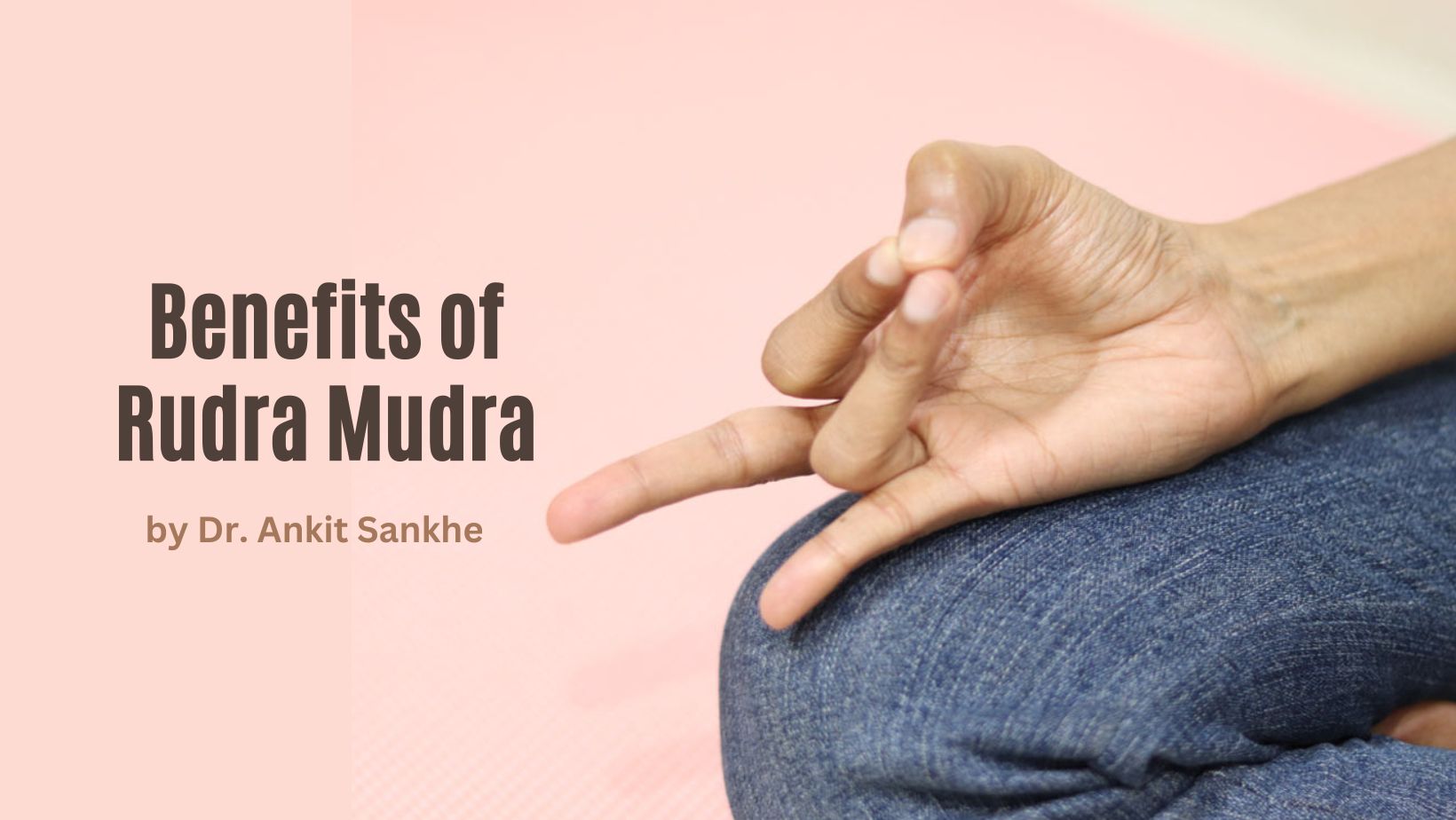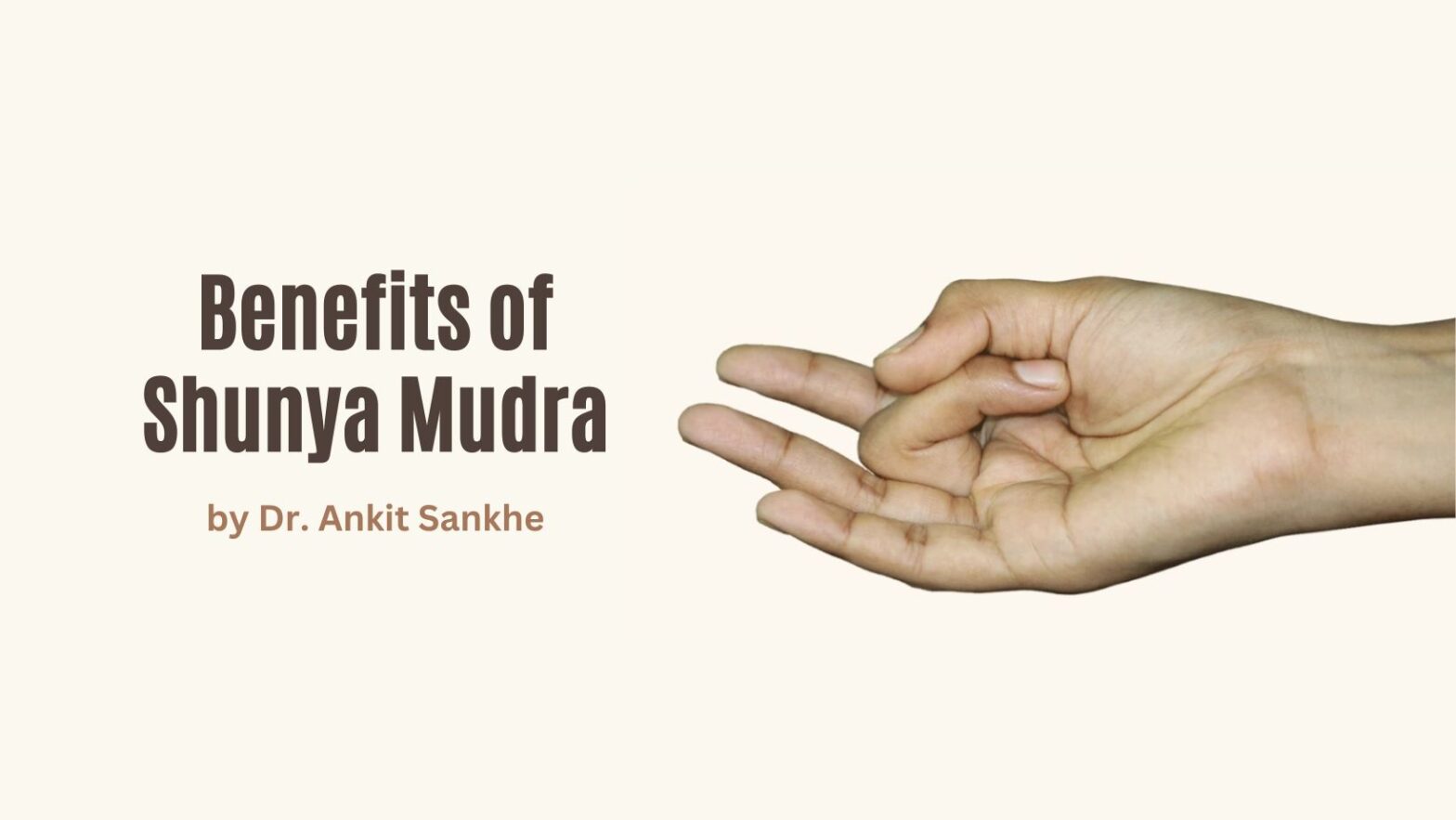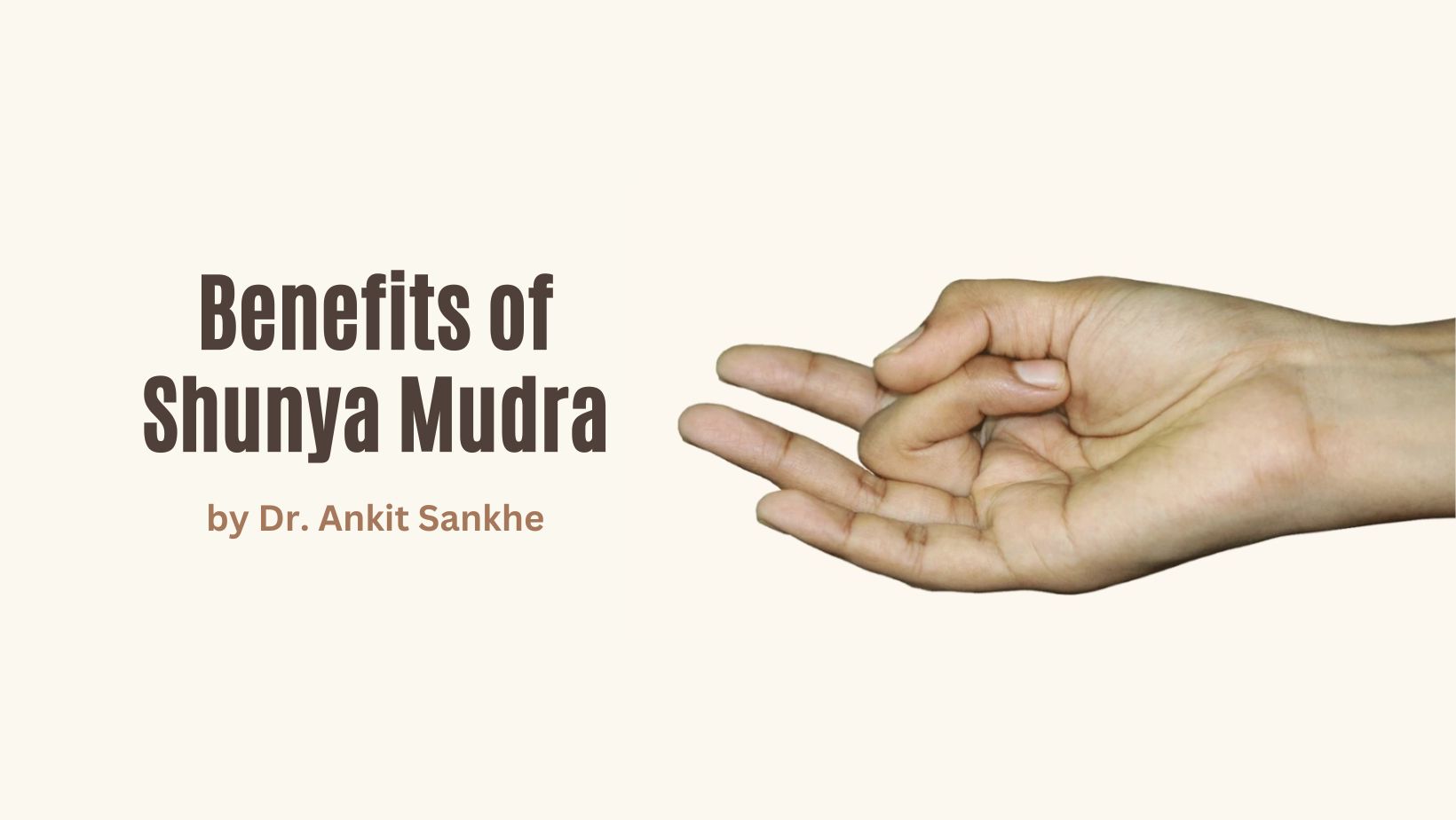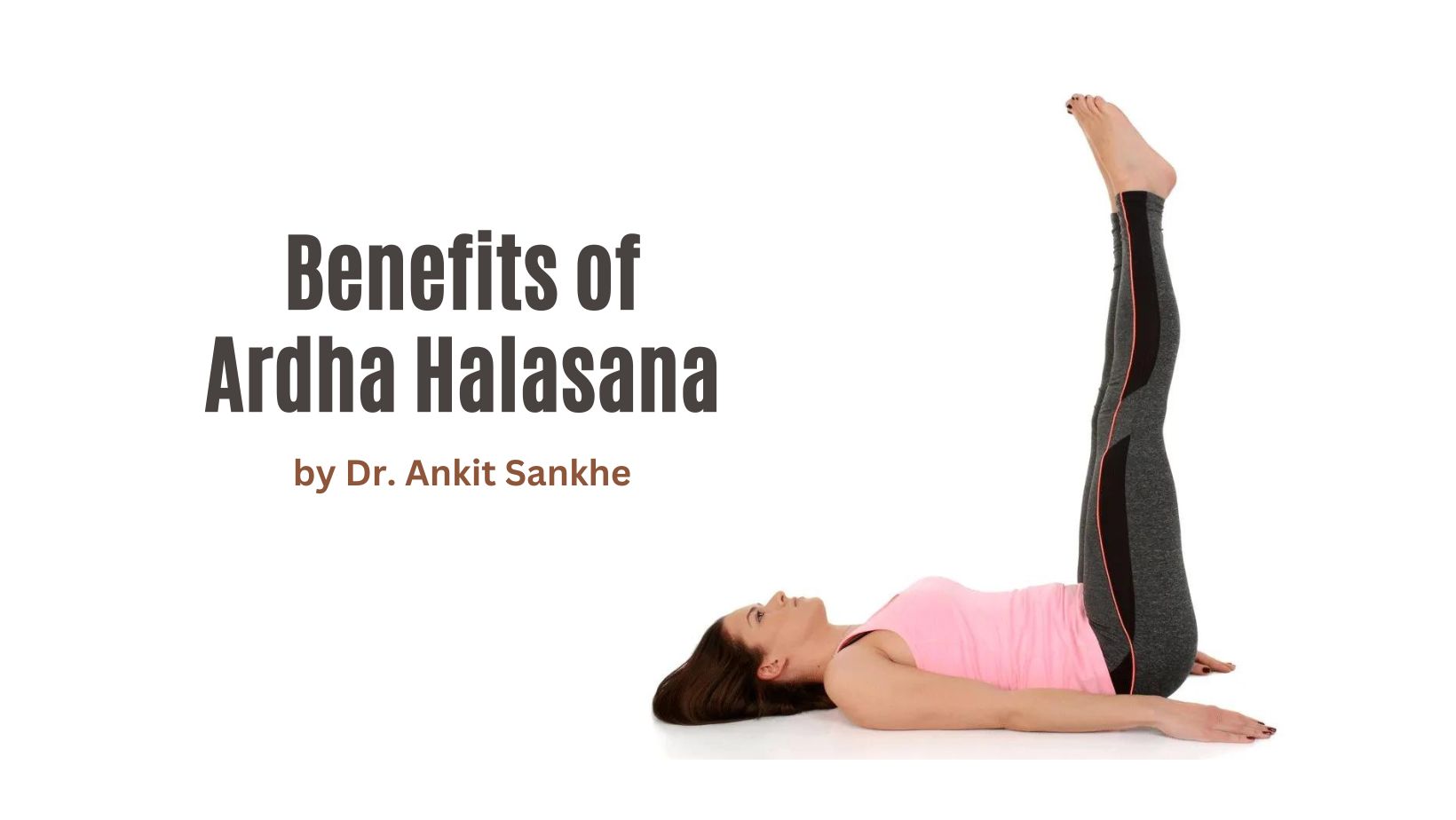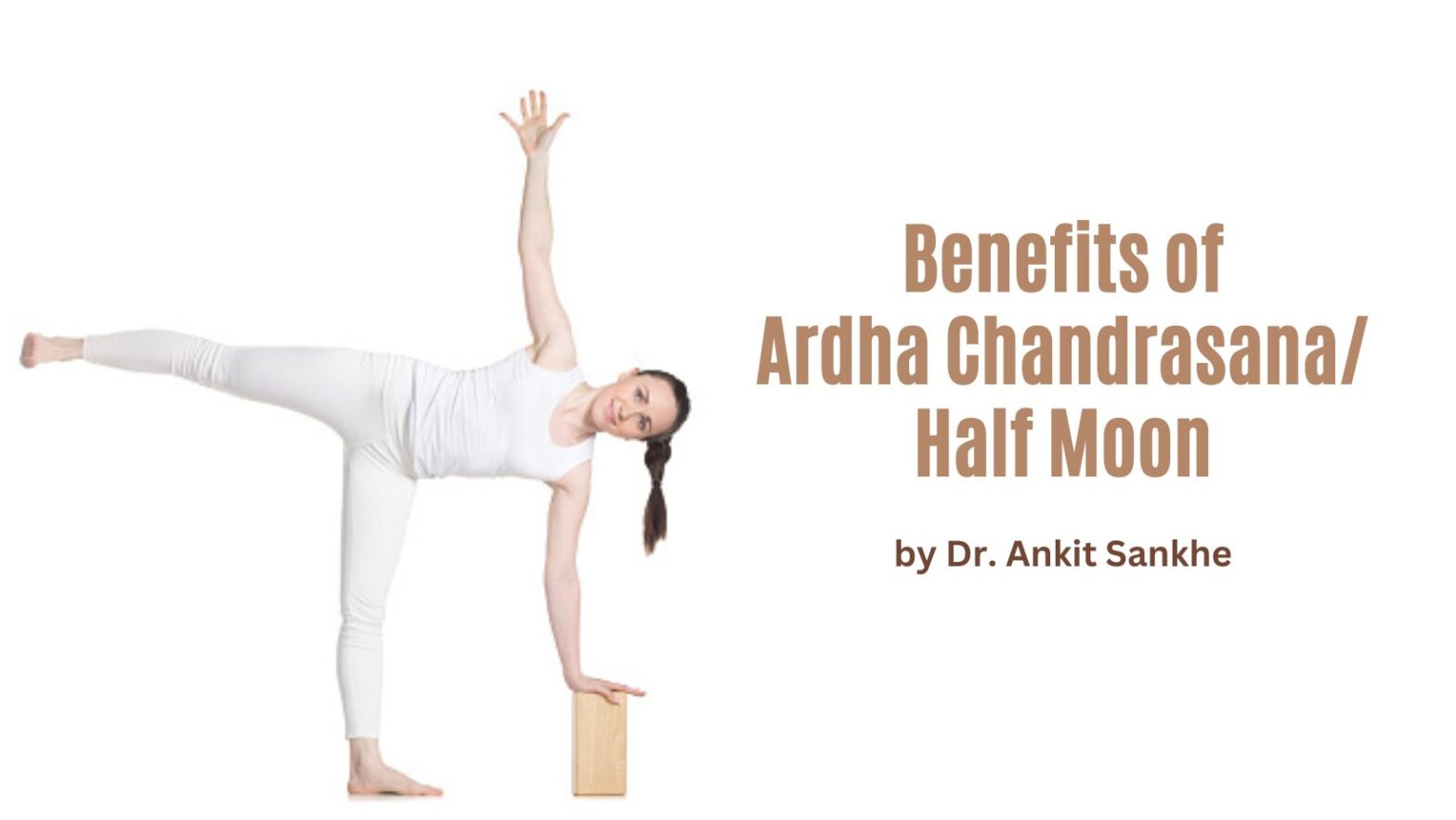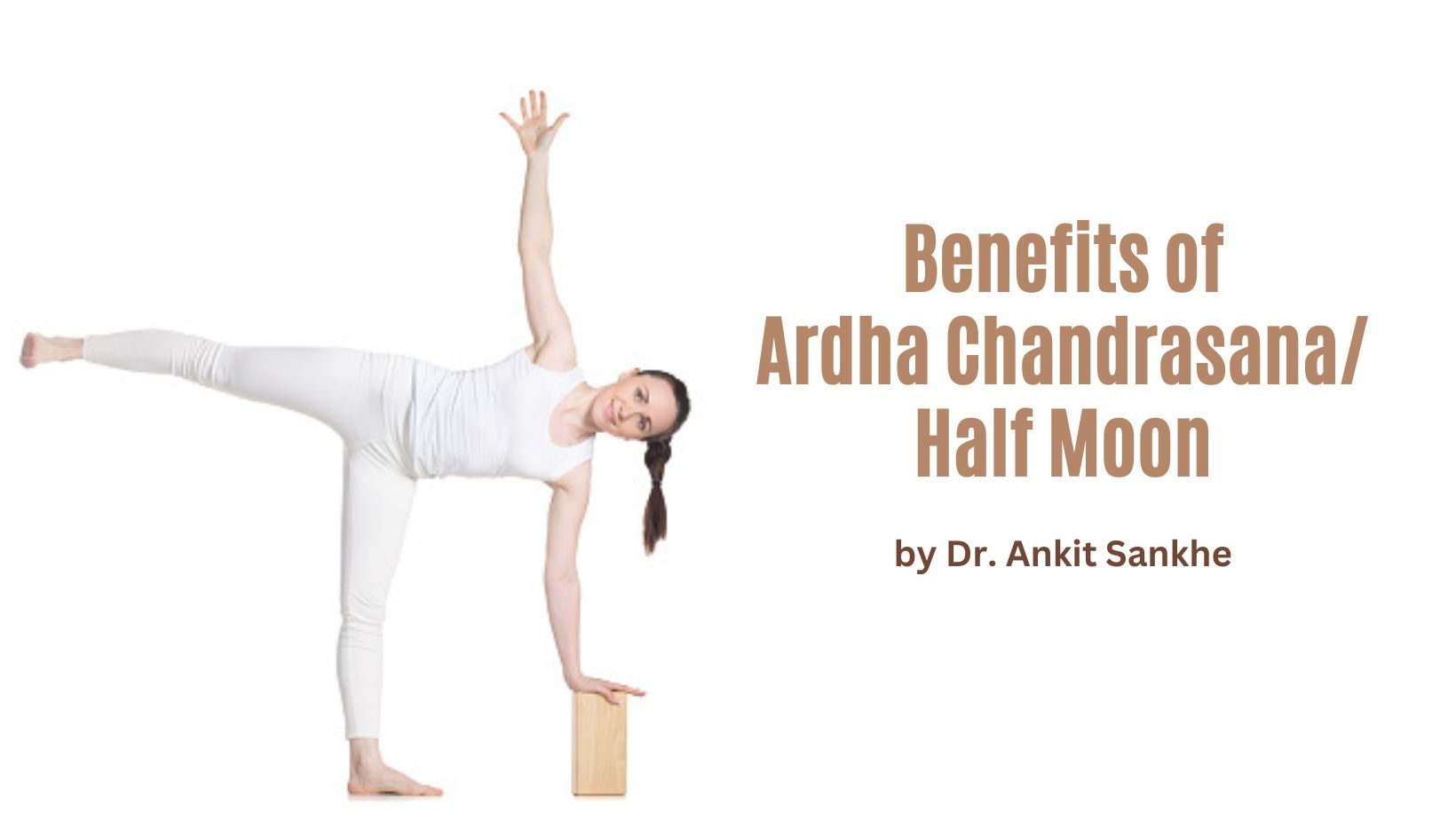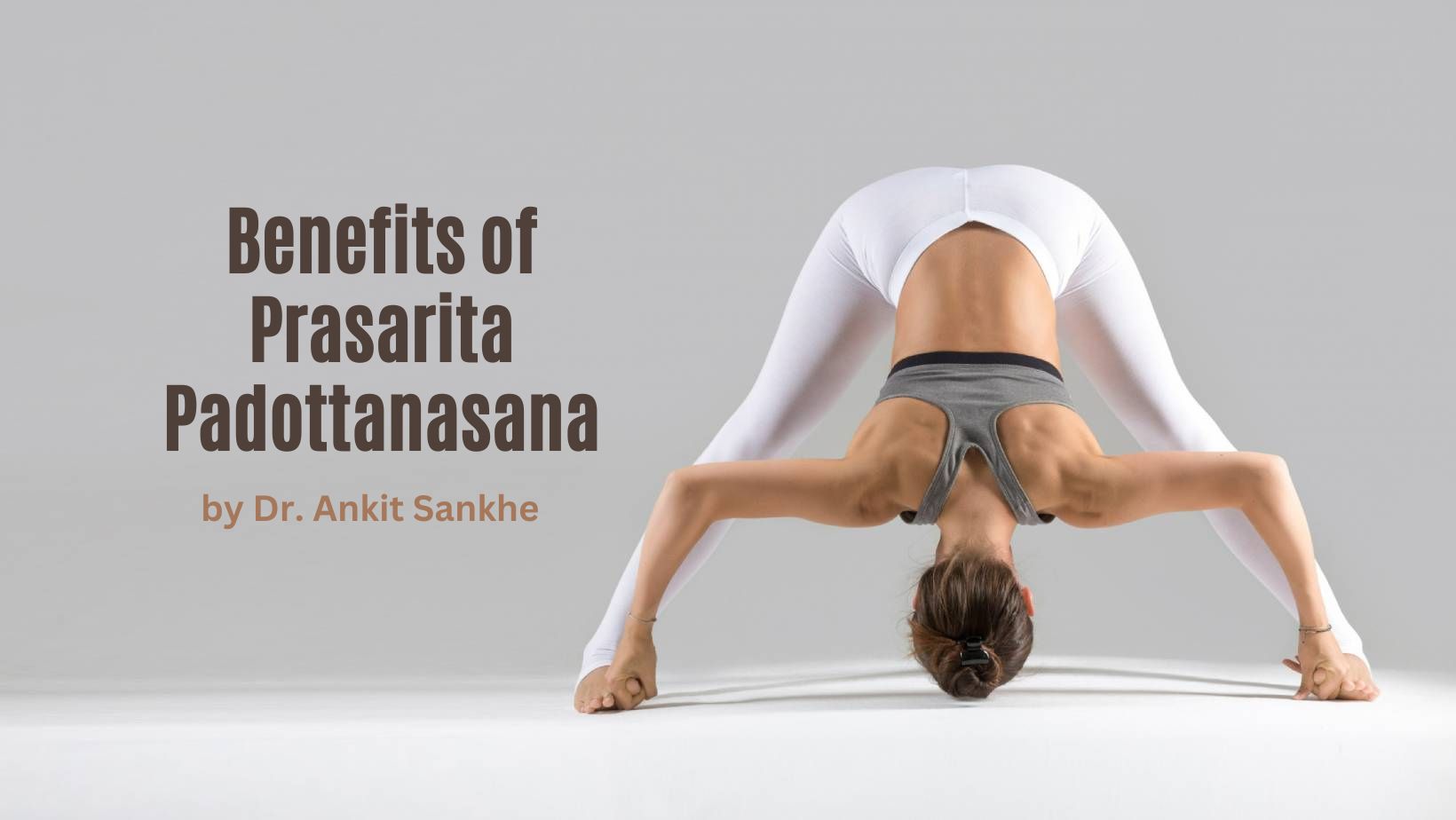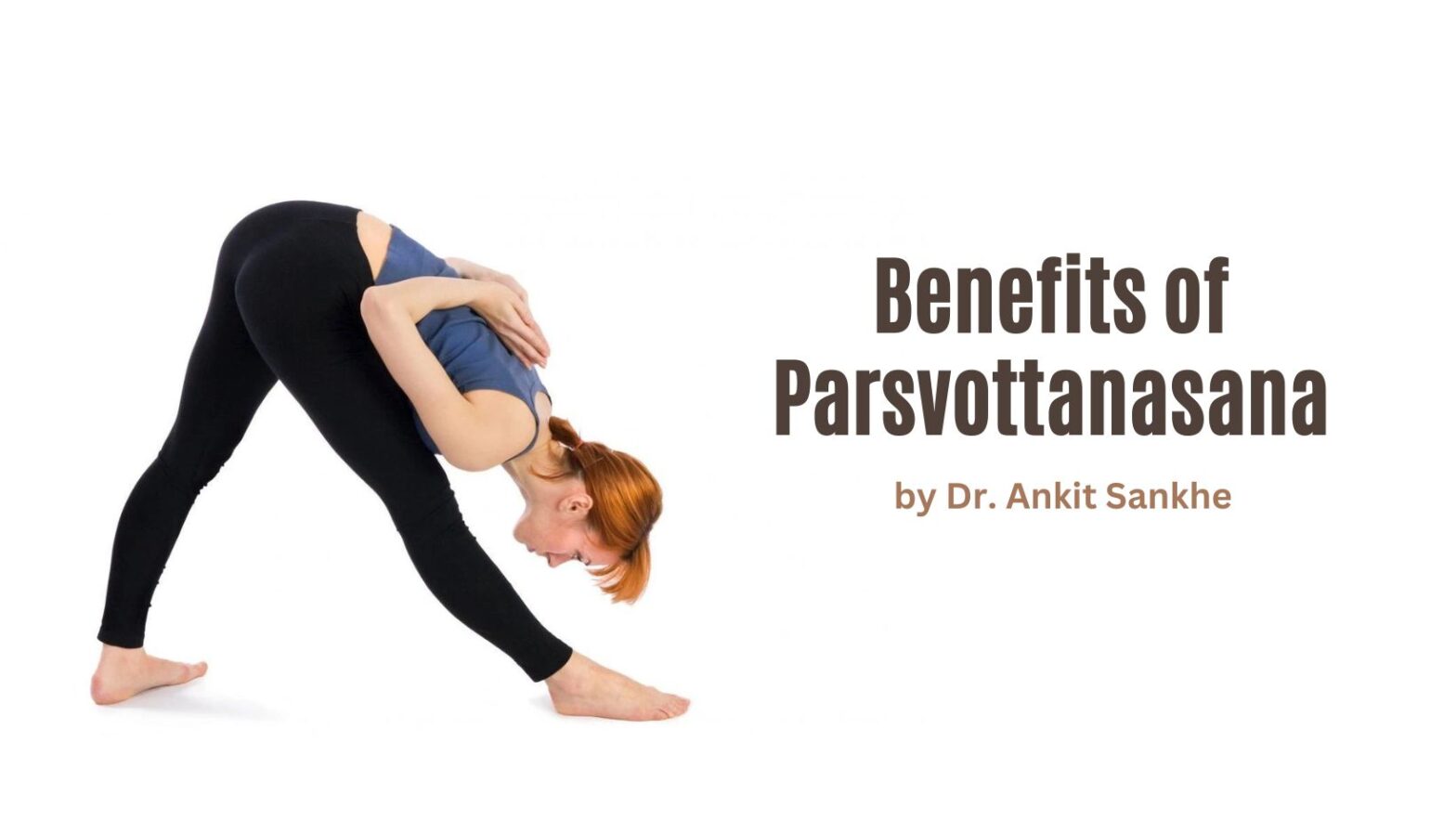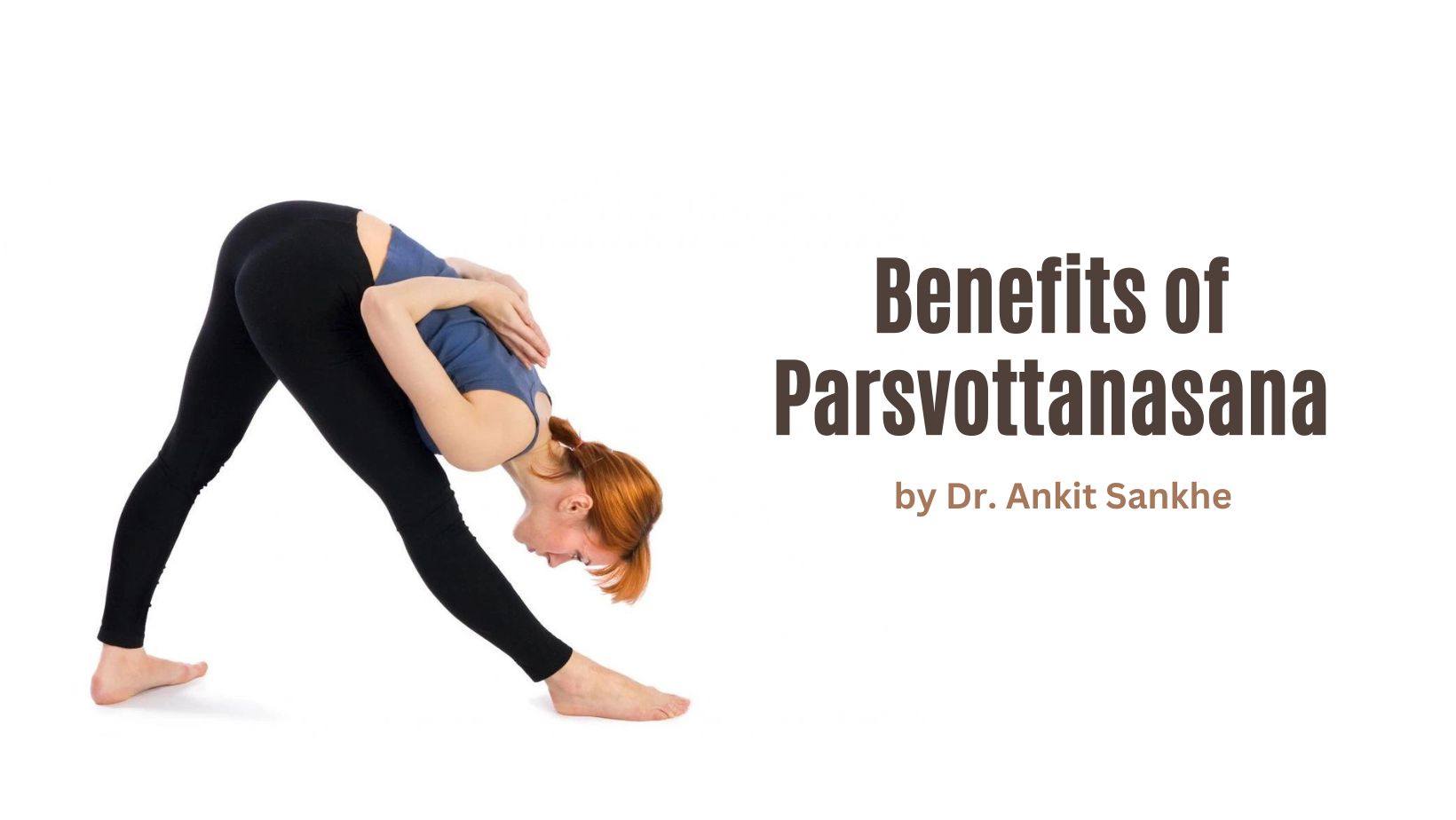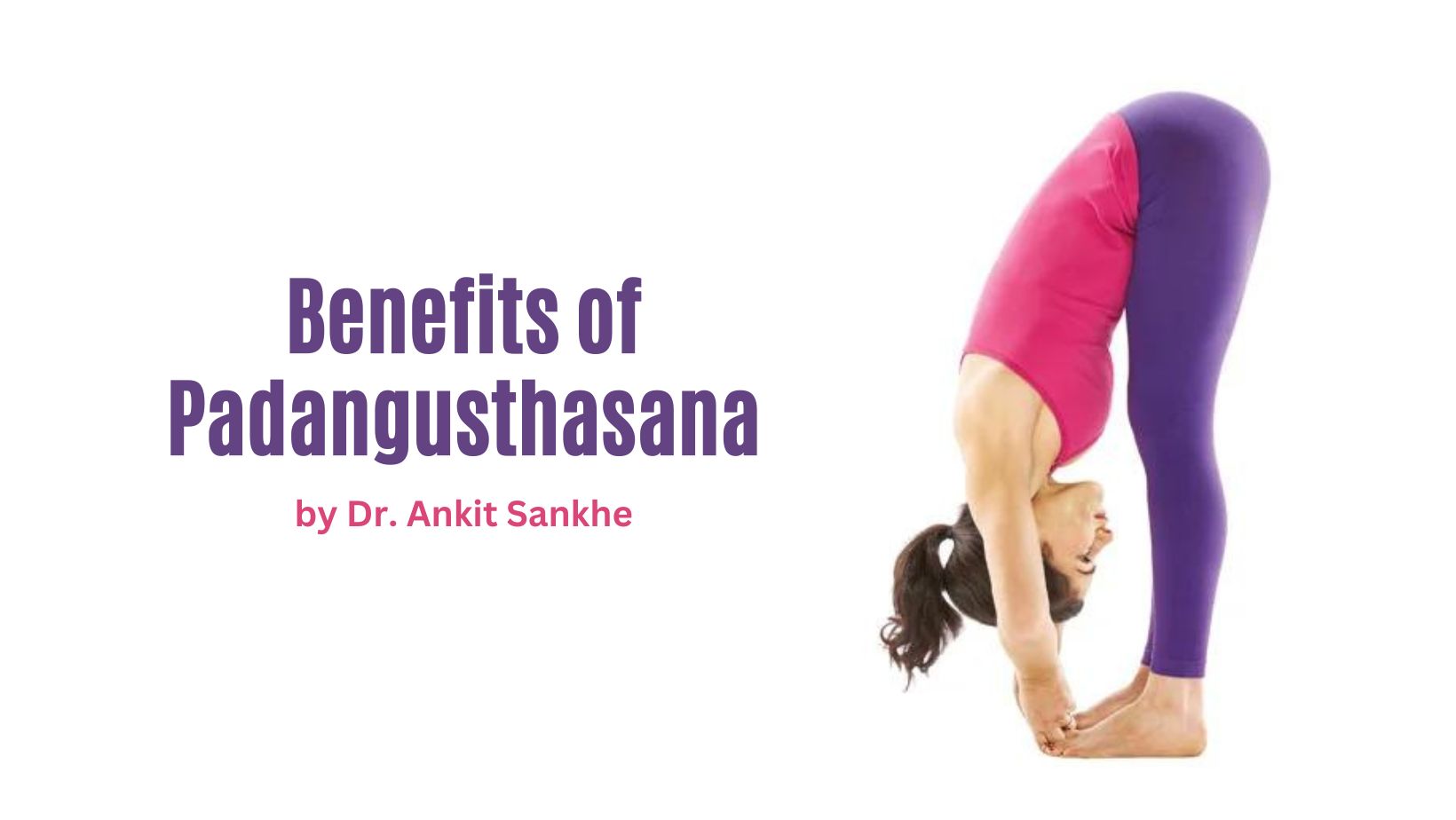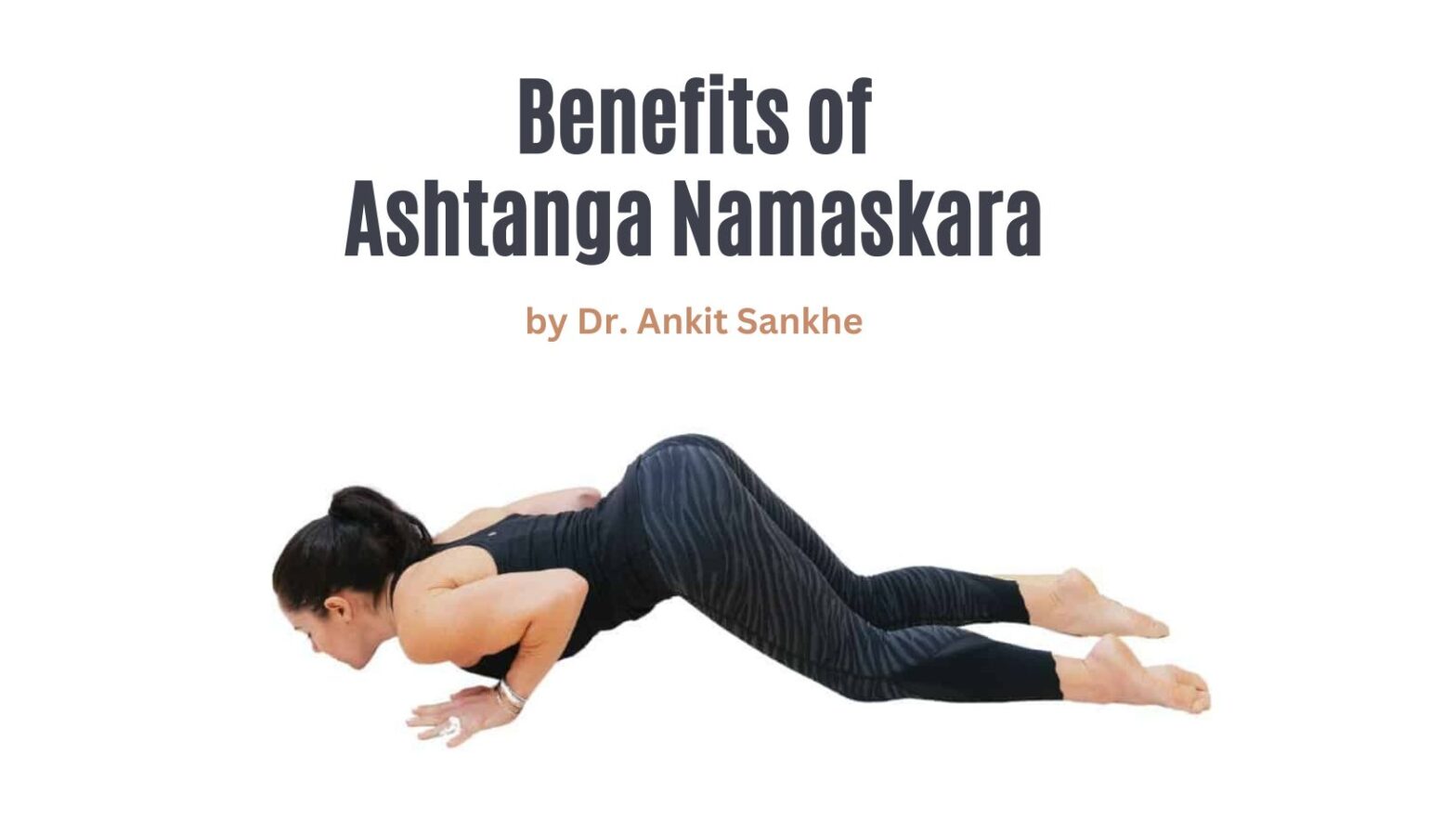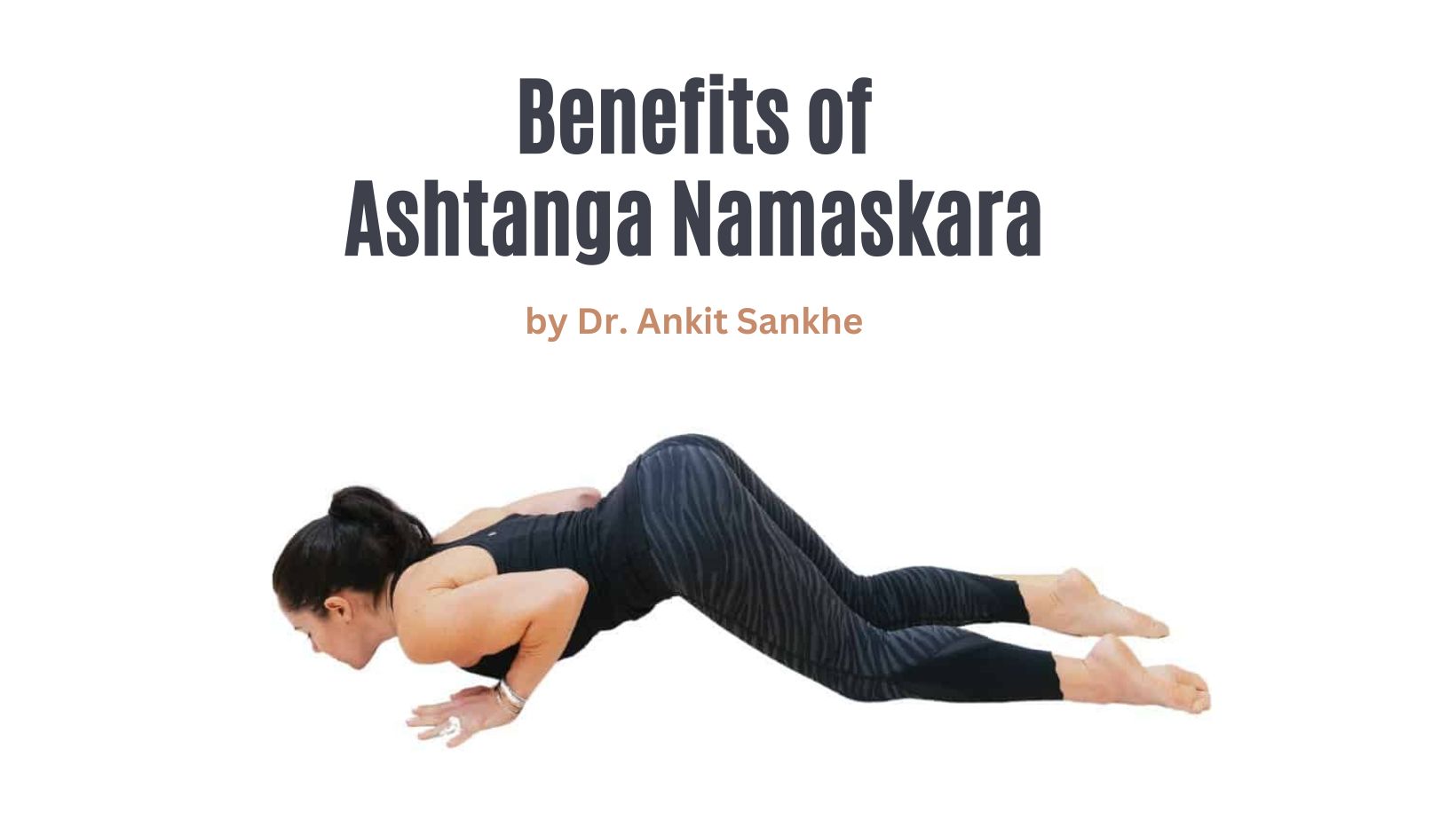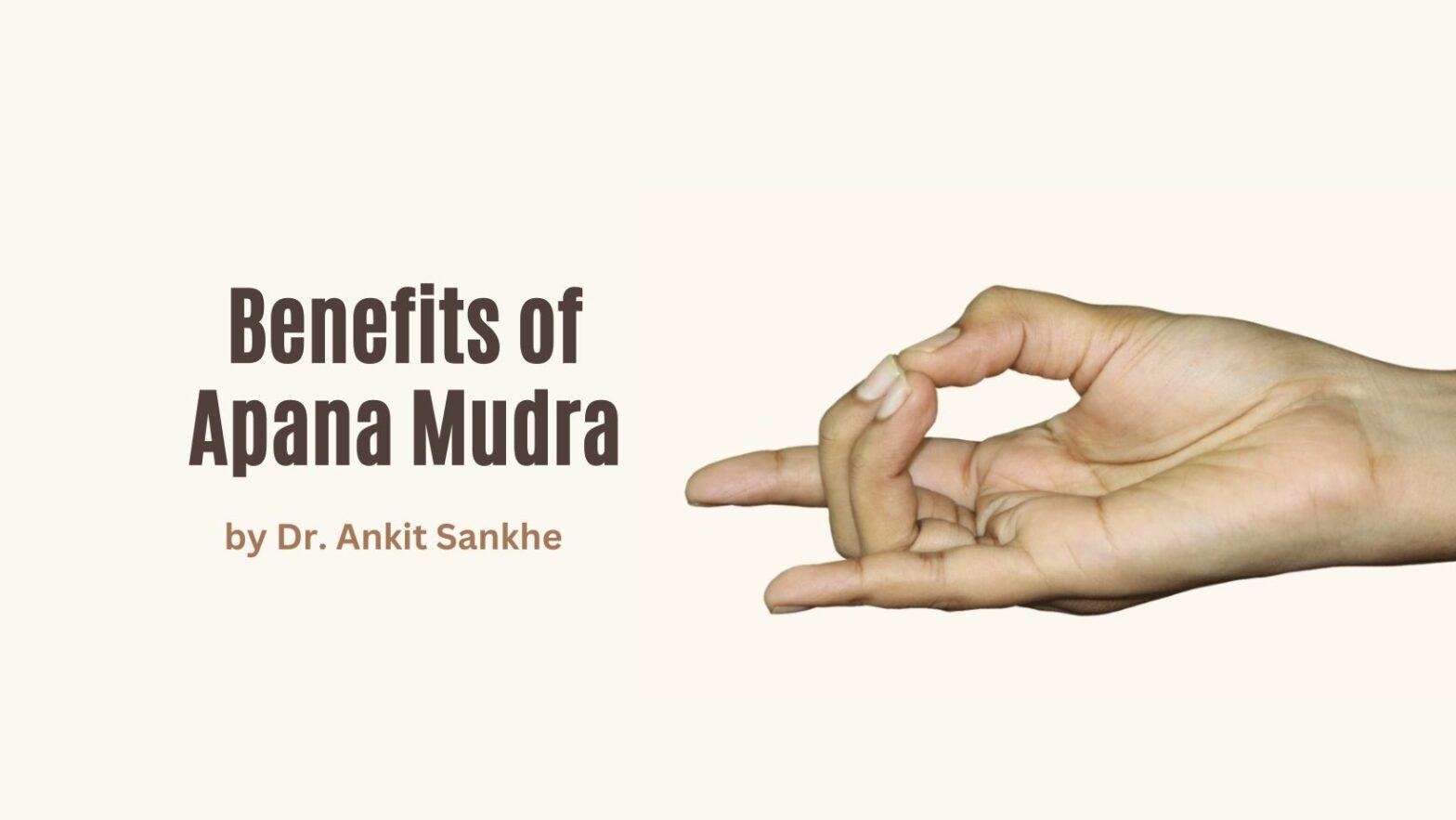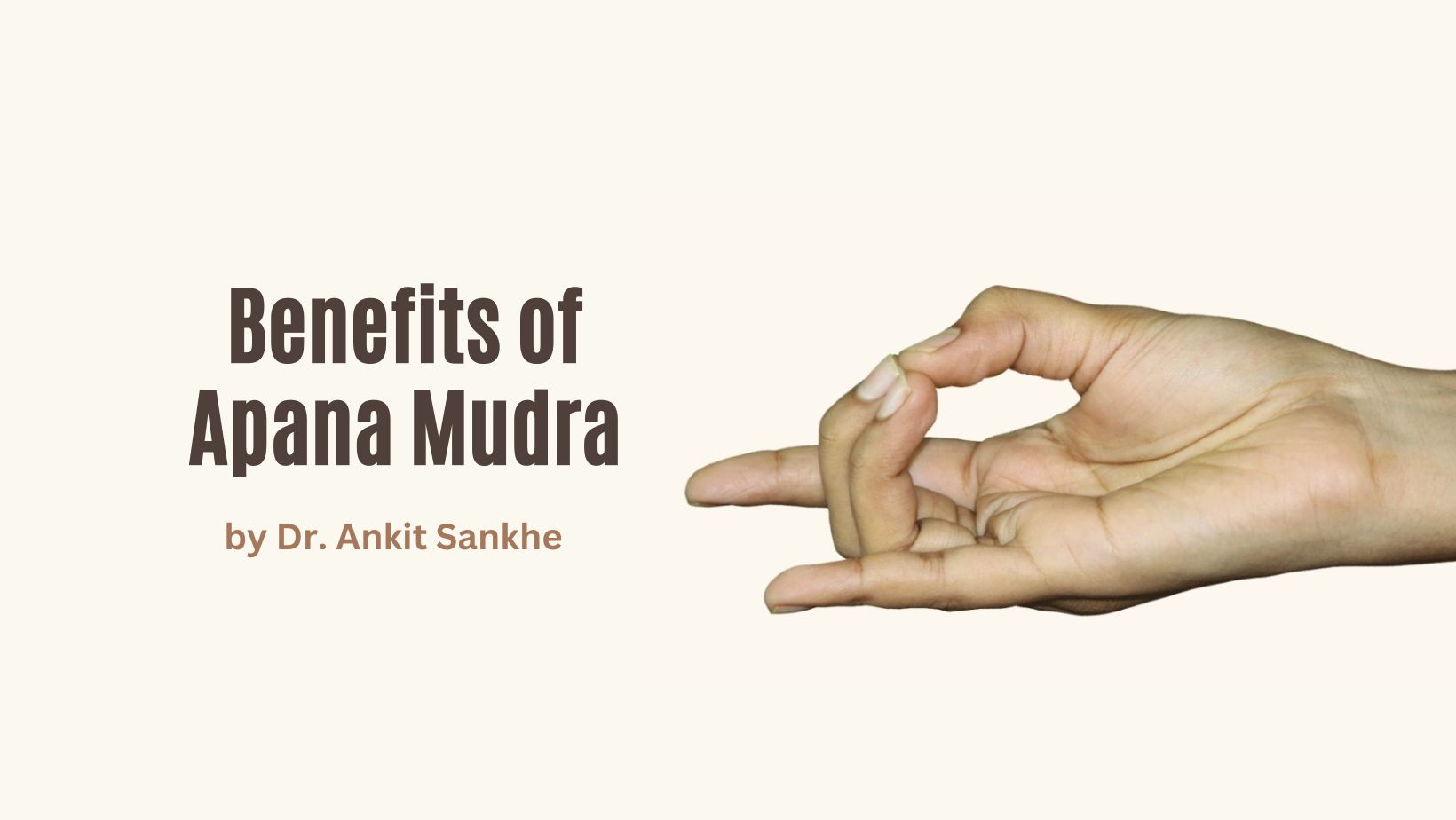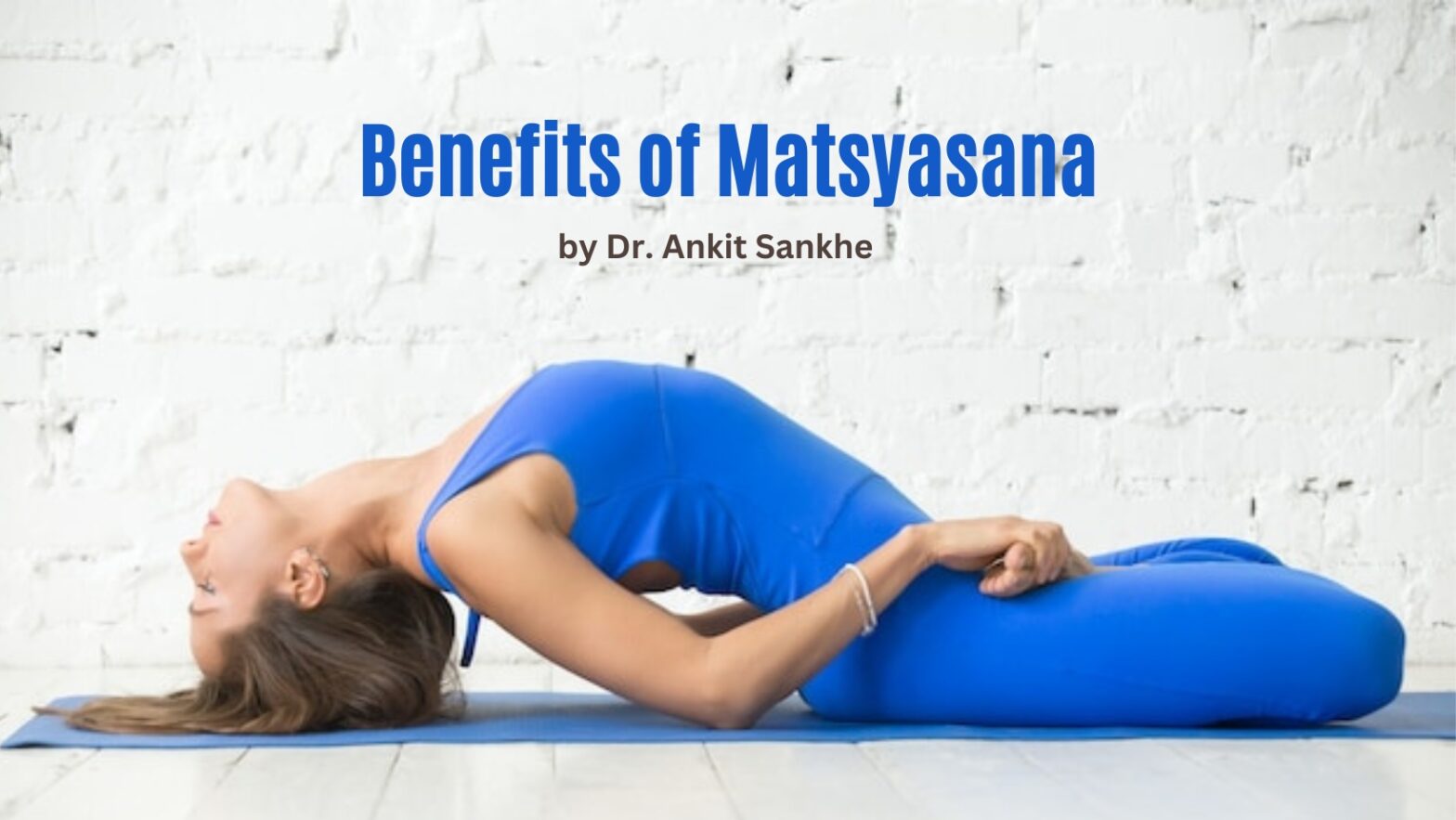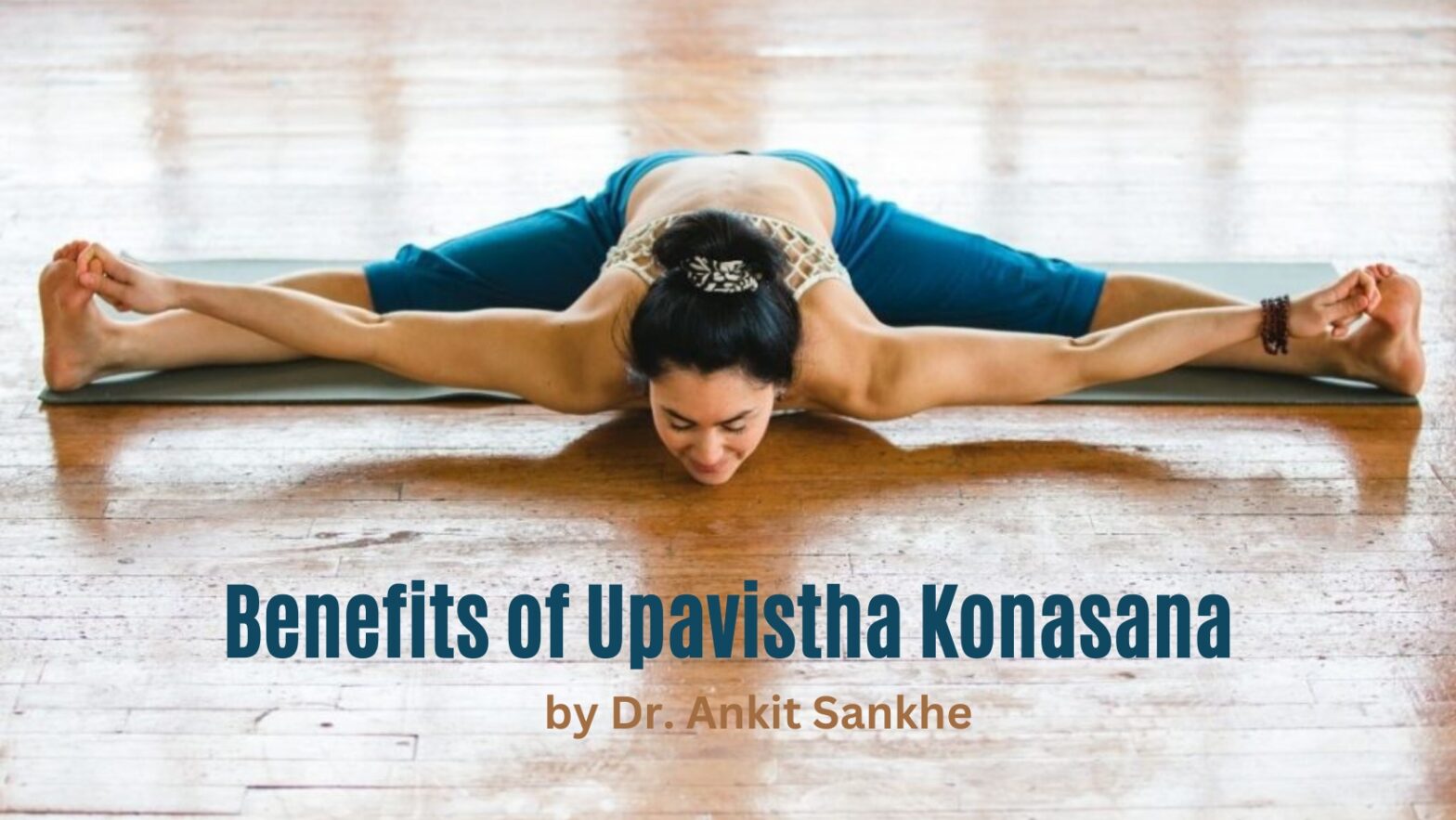Home » Blogs
Benefits of Markatasana and How to Do it By Dr. Ankit Sankhe
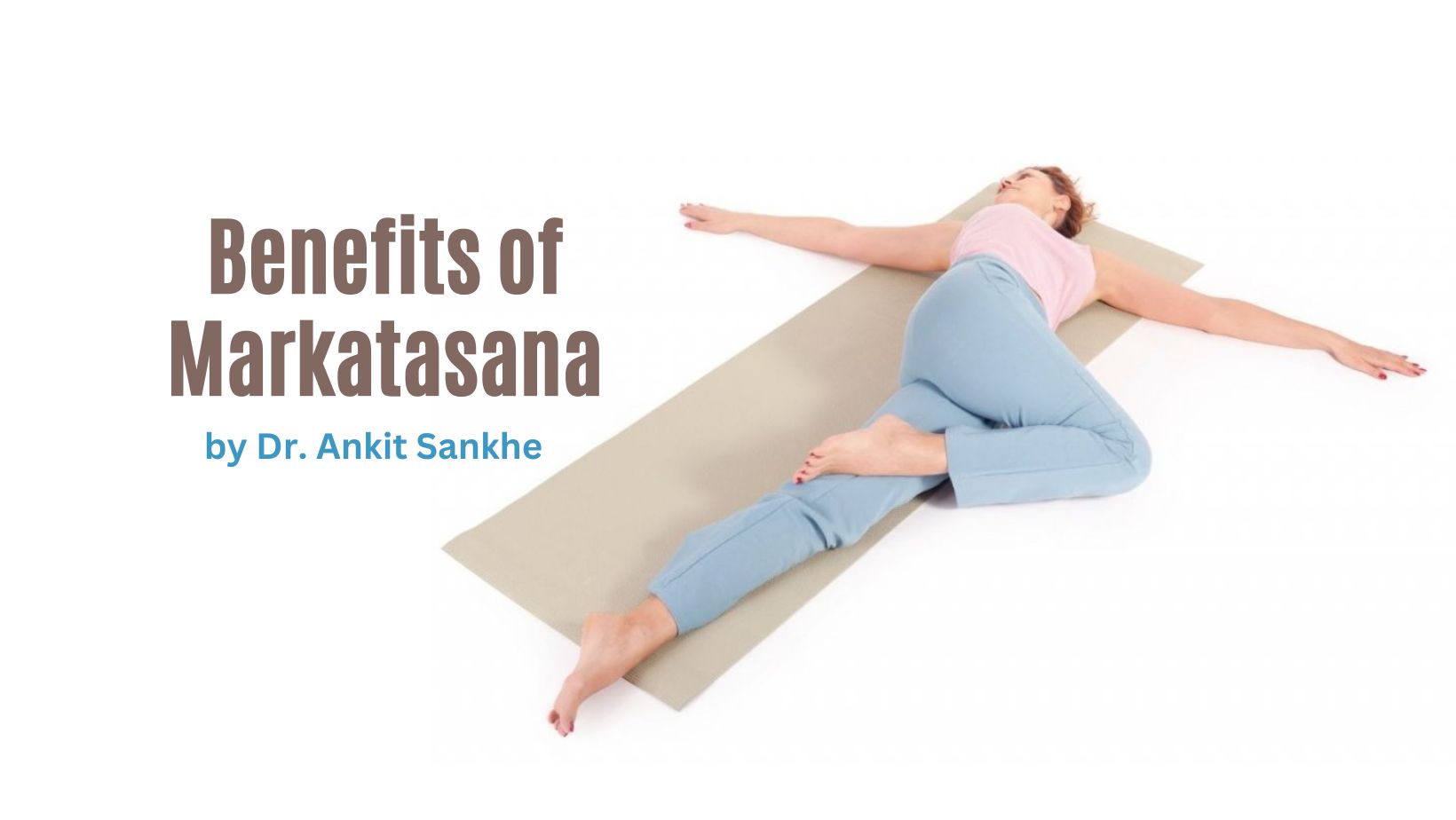
Introduction:
Humans are caught up with the rapidly changing life around us. We rarely have time for ourselves, especially for physical and mental health. Due to our busy schedules, we all became lazy and were affected by many illnesses. Living a sedentary lifestyle can have negative consequences on our health. Do not worry; heard of the phrase “Yoga se hi Hoga”? Yoga, a 3000-year-old ancient practice, uses components like asanas and pranayamas to improve physical and mental health. This post will highlight the steps, benefits, and much more of a popular asana called markatasana.1 Let us discuss more the Markatasana and its health benefits.
What is Markatasana?
Markatasana is also called the spinal twist pose, monkey pose, or markat asana. Markatasana is derived from Sanskrit words, “Markat”, meaning monkey, and “asana,” meaning yoga or posture. So, therefore it is also called the monkey pose.2,3
How to do it?
Markatasana yoga must be done properly for maximum health benefits. One may perform Markatasana yoga in the following manner:
- Roll out a mat and lie on your back with your feet together on the ground.
- Extend the arms sideways at shoulder level.
- Next, inhale, bend both knees, and turn both legs to the right side. Rotate your head to the right and gaze at the right hand.
- This will give a spinal twist towards the right side.
- Breathe out and repeat the steps with the other side (left).2
Do you know?
- In Indian mythology, many asanas are named after the vanara of the ancient scripture Ramayana. One such asana is markatasana or the monkey pose.
- This asana was described for the first time as hatha yoga practice in the 17th century.
- This asana signifies a monkey posture, and it is believed that monkeys are easily distracted; there are even terms like “monkey-mind” describing a tendency of the human mind to leap from one object to the other. On the contrary, markatasana is a reclining posture focused on meditative practice.
- Mahipal at Ayodhya, India was the one to achieve a world record for the “longest performance of markatasana,” he performed markatasana for one hour and eleven minutes on Jun 21, 2020.
Benefits of Markatasana:
Keeping the origin and history in mind, let us discuss some benefits of Markatasana, which will make this asana worth trying. Enlisted below are a few health benefits of Markatasana.
Benefits of Markatasana in Obesity:
A sedentary lifestyle characterized by long periods of inactivity can impair the ability of the body to break down fats. This leads to fat accumulation in the body, increases obesity, and increases the risk of other diseases. Shirley et al. conducted a study in 2014 to assess the effect of yoga intervention on obesity. The yoga intervention included asanas like Markatasana, and it was found that it resulted in a reduction in BMI. Additionally, the practice of this asana increases the levels of leptin, a hormone that regulates body weight. Therefore, yogasanas like Markatasana and other asanas may positively impact obesity. However, Markatasana should not be considered an alternative to modern medicine. Kindly consult a doctor for proper management of obesity. Additionally, it is advised to perform this asana under the supervision of a qualified trainer.3
Benefits of Markatasana on Lipid Profile:
A lipid profile is a blood test done to measure the body’s total cholesterol levels. Determination of cholesterol is important as an elevated level of cholesterol in the body can be a risk factor for various cardiac diseases. A study by Shirley et al. in 2014 stated that markatasana might help reduce total cholesterol, low-density lipoprotein, or bad cholesterol. Furthermore, this asana may help in reducing serum adiponectin and triglycerides. Thus, the Markatasana may positively impact your lipid profile, but depending on this, asana should not be considered an alternative to modern medicine. Kindly consult your doctor for the proper treatment of an abnormal lipid panel. Additionally, it is recommended to practice this asana under the supervision of a qualified trainer.3
Benefits of Markatasana in Social Anxiety Disorder:
Social anxiety disorder (SAD) or social phobia is immense nervousness in normal situations due to a fear of being watched by others. This issue is often ignored, and its management is still less understood. Danish et al. conducted a study in 2022 to assess the effect of yogasanas like Markatasana on health. A daily thirty-minute practice of asanas like Markatasana positively impacted SAD. Additionally, this asana helped in reducing the severity of bladder shyness and agoraphobia (fear of places or situations). However, it is recommended not to rely on this asana alone and consult a doctor to treat social phobia properly. Additionally, one should have proper training in this asana under the guidance of a qualified trainer.4
Benefit of Markatasana on Covid-19:
The covid-19 pandemic, a global crisis, is an infectious disease caused by the SARS-CoV-2 virus. Immune-compromised individuals are always at a high risk of infections. Daily performing yogasanas like Markatasana helped build herd immunity, boost overall health immunity, and facilitate recovery. Thus, training Markatasana and other asanas may enhance the immune system and fight infections like Covid-19. But this asana should not be considered an alternative to modern medicine. So, kindly consult a doctor for proper treatment and not rely on this asana alone. Additionally, one should practice this asana under the supervision of a qualified trainer.5
Other benefits of Markatasana:
- Asanas like Markatasana may help increase postural stability.3
- It may help increase hand-grip strength.3
- It may help in relaxing the mind and body.4
The above-mentioned benefits of Markatasana are done in a limited human population and are purely based on a literature search. Therefore, we need more studies to ascertain these claims in larger populations.
Yoga exercise may help develop the mind and body; it is not a choice to modern medicine or treatment. Therefore, you must not rely on or depend on Yoga (asanas) alone to treat any condition. Instead, please consult a qualified or ayurvedic doctor who can assess your condition and advise accordingly. Furthermore, it is necessary to perform and learn Yoga under the supervision or guidance of a trained yoga expert to avoid any injuries.
Risks of Markatasana:
Conditions where Markatasana should be performed with caution are:
- As Markatasana is a spinal twist pose, if you have back pain, you must avoid overstretching as it can make the pain more severe.
Conditions where Markatasana is contraindicated include:
- Slip disc, spondylosis, or spinal injury requires rest and proper treatment as your doctor advises. The practice of Markatasana in these conditions is not recommended.
- There is no data regarding the safety of this asana in pregnancy, children, and the elderly. It is always advised to consult a qualified trainer if you want to adopt this yoga practice into your routine.
Conclusion
Markatasana is also called the spinal twist pose or the monkey pose. Markatasana is derived from Sanskrit words, “Markat”, meaning monkey, and “asana,” meaning yoga or posture. So, therefore it is also called the monkey pose. Training this asana may help improve the lipid profile and decrease obesity, social anxiety disorder, and infections like Covid-19. Additionally, this asana may help increase postural stability, improve hand-grip strength, and relax the mind and body. The practice of this asana should not be considered an alternative to modern medicine. Additionally, the practice of this asana should be performed under the guidance of a qualified trainer.
Frequently Asked Questions
Roll out a mat and lie on your back with your feet together on the ground. Extend the arms sideways at shoulder level. Next, inhale, bend both knees, and turn both legs to the right side. Rotate your head to the right and gaze at the right hand. This will give a spinal twist towards the right side. Breathe out and repeat the steps with another side (left).
References:
- Woodyard, Catherine. “Exploring the therapeutic effects of yoga and its ability to increase quality of life.” International journal of yoga vol. 4,2 (2011): 49-54. doi:10.4103/0973-6131.85485. Available at: https://pubmed.ncbi.nlm.nih.gov/22022122/
- Dilip et al. Yoga Therapy, Ayurveda, and Western Medicine: A Healthy Convergence. Available at: https://books.google.co.in/books?id=TxnKDgAAQBAJ&pg=PT195&lpg=PT195&dq=markatasana&source=bl&ots=ZWpi9n2qZG&sig=ACfU3U2dY2HJ8EdV1N4LNs66b5kcJ2zMLQ&hl=en&sa=X&ved=2ahUKEwizkc2anp78AhVFbGwGHdz2As04UBDoAXoECBUQAw#v=onepage&q=markatasana&f=false
- Telles, Shirley et al. “A comparative controlled trial comparing the effects of yoga and walking for overweight and obese adults.” Medical science monitor : international medical journal of experimental and clinical research vol. 20 894-904. 31 May. 2014, doi:10.12659/MSM.889805. Available at: https://www.ncbi.nlm.nih.gov/pmc/articles/PMC4051462/
- Danish Javed, Shweta Mishra, Yoga practices in Social Anxiety Disorder (SAnD): A case report WSR to paruresis, Journal of Ayurveda and Integrative Medicine,Volume 13, Issue 3,2022,100622,ISSN 0975-9476. Available at: https://doi.org/10.1016/j.jaim.2022.100622.
- Pal GK. Yoga to Combat and Prevent COVID-19. Int J Clin Exp Physiol. 2020;7(2):46-7. Available at: http://www.ijcep.org
Disclaimer: The information included at this site is for educational purposes only and is not intended to be a substitute for medical treatment by a healthcare professional. Because of unique individual needs, the reader should consult their physician to determine the appropriateness of the information for the reader’s situation
